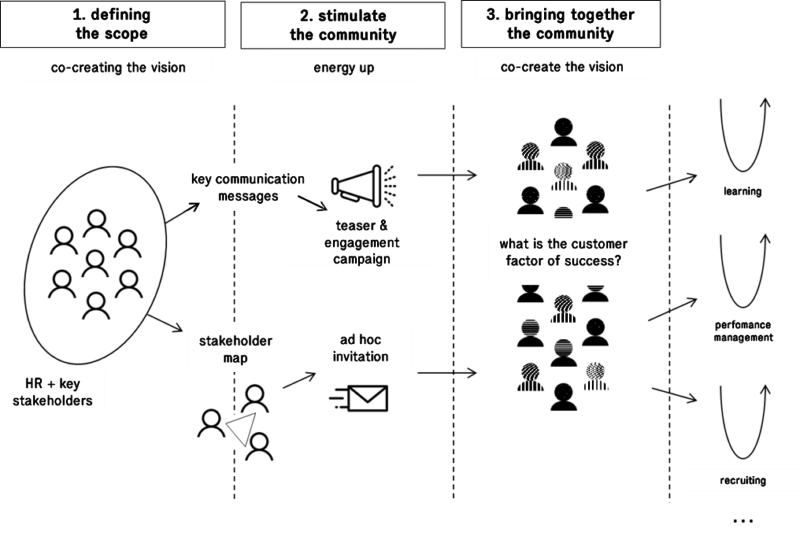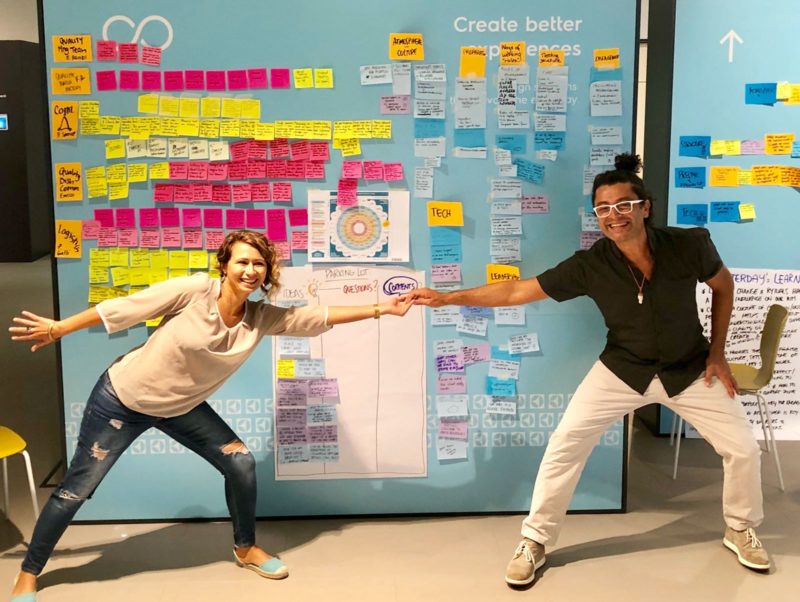Have you ever noticed when companies announce that a new management system will be implemented that will help employees be faster and more efficient in processing paperwork, and instead of jumping up and down, they put their hands in their hair? Have you ever noticed that sense of slowness that follows the grueling weeks of analysis and planning? And then the feeling of frustration and difficulty with implementation experienced during the training and adoption phase?
If yes, then you are familiar with the effects of a traditional waterfall implementation of a management system. In that case, you may have thought it was inevitable, and that demotivation and slowdowns are merely side effects of a justifiable adoption practice.

Well (DRUM ROLLS), it doesn’t have to be that way. Quite the contrary!
Both a technological innovation of management type, and a digitalization process, can be experienced by a company as an opportunity to:
- give new luster to their values
- learn a new way of working together,
- recreate a sense of corporate community,
- create a new chapter in the story of your identity
How? By putting people at the center of a process of rethinking their work that will travel, instead of with the timing of an elephant, with the lean and agile timing of a ferret.
But why is it better to proceed like a ferret in these situations? Because it’s useless in contexts in which it’s impossible to predict that if I perform action A I’ll get B as a result, to spend too much time on long processes of analysis. B, will most certainly not come out the same, and maybe it’s not even what I really need. It’s much better to invest time in figuring out what opportunities we can create with this adoption, what is important to the community of workers in this or that process, and what values we want to cultivate as we work together. In essence, it’s better to invest in creating a dialogic space of corporate community that gives voice to users’ stories and their highest aspirations.
- The first step is to support strategic management, developers, and the people who will be using the management systems so that they can think together about what they are looking for and what they will find in different cycles of use and testing.
- Once that’s done you can start testing basic releases of the applications, gathering feedback and usage stories, to adhere more closely to what those people, with those values, those rhythms, those habits, need.

So, while in the more traditional approach to implementing management systems the majority of time is spent in analysis and planning activities, with an agile approach small parts of software are finalized, and then people test them, collect their feedback, make the necessary changes in successive steps, until the finished application is realized.
This approach can be applied to operations, but it can also become a mental model for working together, where the pillars of agility – transparency, adaptability and continuous prototyping – become value cornerstones.
To help companies breathe new life into their business identity, creating cohesive teams that reflect together and give meaning to their development, it is essential to show them how these technological interventions, with the strategic support of internal communications, can be wonderful opportunities to give visibility to corporate identity. As, for example, we are able to do by working with those developers who embrace the agility approach such as Ccelera -HR tech, specialized in the implementation of the Success Factor management system.

But why would the company want to adopt this agile way of thinking? And why does it also benefit implementers? Here are some of the many good reasons.
Pros for companies:
- easier adoptions: by engaging the user community and understanding their needs, it allows you to create a pool of allies for a desired bottom-up adoption;
- more realism: instead of just rigid requirements whose meaning is lost, agility allows for greater alignment with users’ real aspirations. Theoretical analysis. More empiricism;
- less emotional attachment: the prototype approach allows you to design drafts that you have little time to get attached to. Changes and continuous improvement are thus easier to adopt;
- excellent opportunities for corporate identity
Pros for implementers:
- Have a new perspective: agile is increasingly being incorporated into management systems by design. You might as well explore its full potential, not only on the technology side but also and above all on the people side;
- more time to do what you do best: the principle of simplicity allows you to focus on an implementation that works for the client, minimizing the time spent on analysis and documentation;
- more creative input: if I listen to the need behind the requirement, I’ll have more ways to satisfy it.
The result for both is a minimization of risk as iterative logic anticipates the unexpected. In fact, the various versions that are released do not aim to satisfy 100% of the requirements, but represent questions that aim to understand where improvements can be made and in what way. This means that an error becomes an error only when you don’t learn from the feedback.
Have we intrigued you? If you’re interested in learning more, you can find us in Venice on September 15 at Agile Business Day 2018, of which Peoplerise is a media partner this year.

